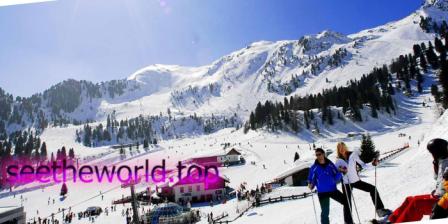Lower Austria is the largest federal state in Austria in terms of area and population.

It covers Vienna with the “green belt” of the Vienna Woods, consists of small, charming villages, picturesque valleys, and cozy towns. At the end of the 20th century, the city of St. Peltier became the capital of Lower Austria . In addition to it, the main cities of this federal land are Krems , Medling, Klosterneuburg and Baden near Vienna.
The territory of Lower Austria was once the cradle of the country. During the time of the ancient Romans, the lands of Lower Austria belonged to the provinces of Norik and Pannonia .
Starting from 791 AD, Lower Austria belonged to the Kingdom of the Franks, and in 970 this area became known as ” Ostmark ” or “Eastern Mark”. The first ruling dynasty of the Austrian lands – the Margraves Babenbergs, originally from Bavaria – became the full owners of the territory.
Today, this land covers an area of 19,163 square kilometers and stretches along the border of the “apricot” valley of the Wachau Danube from the border with Germany in the west to the border with Hungary in the east. To the south, it reaches the slopes of the Rax limestone mountains with the highest peak Schneeberg , which, in clear weather, can be seen already from the borders of Vienna . The popular and closest ski resort of Semmering to the capital of Austria is also located here .
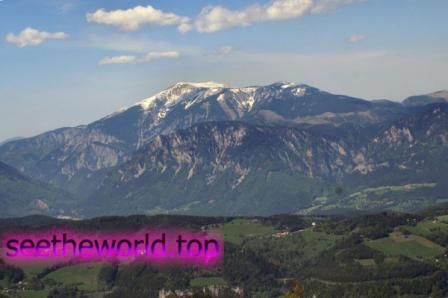
Lower Austria is so large and diverse that it is conventionally divided into “quarters”. For example, in the north of the country, near the borders with the Czech Republic and Slovakia , there is a winemaking “quarter” or ” Weinviertel “. It is not difficult to guess that the main occupation of the inhabitants of this part of the region is winemaking.
To the west is the “forest” quarter – ” Waldviertel “. It is managed by hunters, owners of pastures and small national squash farms, where cooks prepare delicious dishes from forest game – venison stew, roe deer steak, wild boar and rabbit meat.
The heart of Lower Austria is the Wachau Valley.
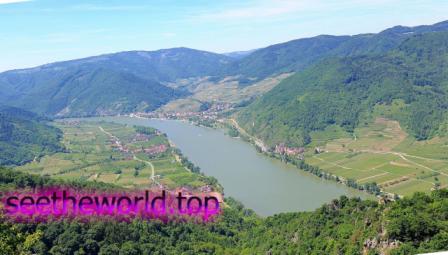
Here the Danube flows and orchards grow. There are especially many apricot trees here. During the flowering period, in the middle of spring, the valley becomes white and pink. The fertile land of the Wachau gives Upper Austria such a rich harvest of apricots that local residents supply the entire country with apricot products. Apricot jam, nectars, liqueurs, apricot schnapps and even salted apricot pits are all made in Wachau. By the way, the favorite drink of Archduchess Maria Theresa – the only female ruler in the history of Austria of the 18th century – was coffee with a drop of apricot liqueur. It can easily be found on the menu of a restaurant or coffee shop. That’s what it’s called – Maria Theresa’s coffee.
Formidable fortresses and castles rise above the high banks of the Danube Valley. The English king Richard the Lionheart was once imprisoned in one of the fortresses . The ruins of the fortress and the Augustinian monastery are the main attractions of the town of Dürnstein .
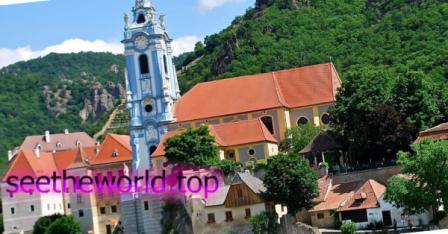
Despite the fact that its population is less than a thousand people, this settlement has the official status of a city. Above the left bank of the Danube, 60 km from Vienna, rises the city of Melk and the abbey – the residence of the Babenbergs .
In the 11th century, these lands were transferred to the order of Benedictines, who built an abbey here. The monastery was rebuilt several times. Today’s outlines were given to it in the 18th century by the most outstanding artists and architects of the Baroque era – Jakob Prandauer , von Erlach , Josip Mangenast and others.
There are many abbeys and monasteries in Lower Austria .
Among the most famous and notable ones are Gottweig Abbey , where the first woman poet of the Middle Ages, Lady Ava , is buried, the Zvettl Cestercian monastery in the town of the same name, Kremsmünster Abbey .
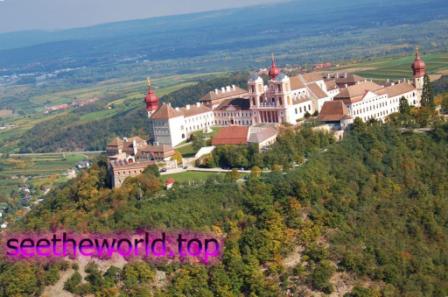
There are more than 10 medieval monasteries in Lower Austria . Many of them, such as Melk , were rebuilt in the “baroque” style, but there are also those that have preserved their Medieval Gothic architecture. The Cistercian monastery ” Heiligenkreutz ” or ” Holy Cross ” monastery has preserved its original Gothic appearance . It is located in the east of Lower Austria , which is considered an ideal place for walking. Vienna forest, contrary to widespread stereotypes, are not impenetrable thickets at all. This is a well-organized territory, with many kilometers of paved paths, parking lots, restaurants, small family hotels. Here you can go for a walk, cycle or make a pilgrimage from Vienna to the nearest monastery.
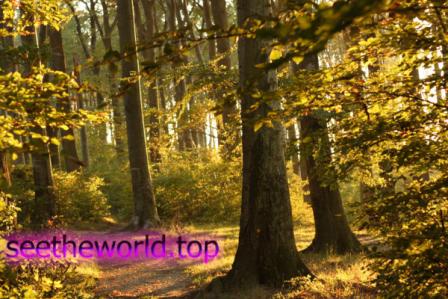
The wonderful town of Baden near Vienna is located in the “forest” part of Lower Austria . Here, at balneological resorts, during the monarchy, the court nobility rested. Even the emperors themselves did not ignore the healing properties of local springs.
The medicinal value of hydrogen sulfide, which is rich in Baden , was discovered by the ancient Romans in 50 AD. Napoleon Bonaparte , Beethoven , Mozart visited here at different times .
Lower Austria: unforgettable places
If you are looking for interesting places to go, you will certainly find them in Lower Austria . In the hot summer, you can refresh yourself while swimming in the largest underground lake in Europe or travel back in time on a nostalgic express. Animal and nature lovers can see their life under the surface of the water in the Unterwasserreich nature reserve and go bear watching from Arbesbach. And that’s not all.
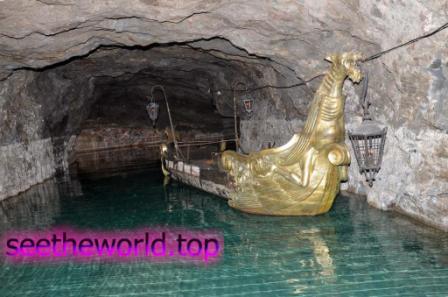
We will begin our journey in the Hinterbrühl cave , which boasts the largest underground lake in Europe. This natural monument hides in its bowels (60 m below the surface of the earth) the largest underground lake in Europe, with an area of 6,200 m 2 . During World War II, the world’s first jet fighter (HE 162) was launched here. The rare maze of cave systems, corridors and stalactite halls is today a famous tourist attraction, culminating in a romantic lake cruise. The magical play of light and colorful reflections from the surface of the water will leave an unforgettable impression on every visitor.
If you like adventure, we recommend you to travel back in time on the Reblaus Express, which connects the wine town of Retz in Weinfirtel with Drozendorf an der Dieu in Waldfirtel. You can get off at one of 11 railway stations and from there go on trips by bus, bicycle or on foot. A diesel locomotive passes through a moderately hilly region of vineyards, golden fields and mysterious ponds straight into the deep and dark forests of Waldfirtel . Culinary delights will be taken care of by winemakers in a special wagon, which has been turned into a wine cellar. Bicycles are transported free of charge.
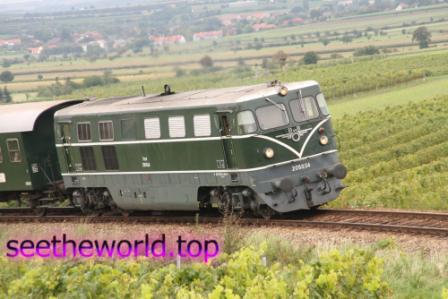
If you like boating, a nostalgic excursion to the Wachau World Heritage Site , through which the Danube flows in its most beautiful section, is perfect for you. The valley of the Wachau gorge, almost 36 km long, winds between Pobiezno and Krems, and it is here that you can sail on the ship’s deck. Beautiful and rare views of romantic castles, monumental monasteries and a magical region with vineyards and apricot orchards will open from the Danube. The main deck is also suitable for people in wheelchairs, the interior is non-smoking, the “sun deck” has a real relaxing atmosphere, and the ship’s kitchen is famous for its freshly prepared regional dishes. While swimming, children can take part in a short “ship captain” course.
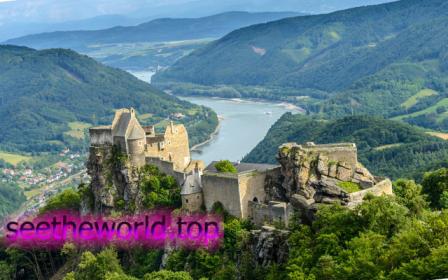
For relaxation, you can go, for example, to the Roman thermal baths in Baden, where there are pools with an area of more than 900 m 2 and a complex with saunas. The largest glass roof in Europe hovers over the resort world. A healing spring with a high content of sulfur and a temperature of 35.3 ° C emerges from the depths of the earth.
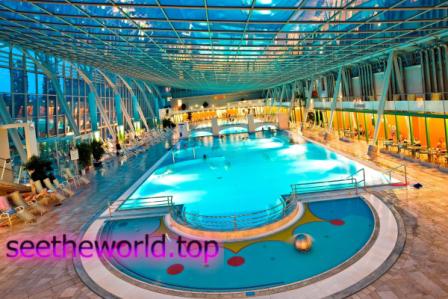
Nature lovers should not miss a visit to the Unterwasserreich nature reserve , where there is an exhibition that details life in and under the water. It introduces visitors to its properties and inhabitants – from microorganisms and plankton to fish and amphibians. The surrounding peat bogs and bogs in the open complex with their unique fauna and flora are a very popular place and an interesting attraction in the Waldfirtel region. Here you can observe frogs, snakes, dragonflies and fish in their natural environment. At the same time, you can watch Arthur and Misha feeding the otters.
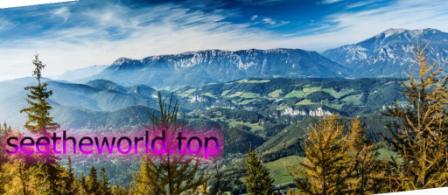
Finally, we recommend a trip to the Bear Forest in Arbesbach , which is one of the three brown bear sanctuaries. Initially, the animals lived with private breeders or in circuses, but they were moved to a natural environment with conditions that correspond to their needs. The bears have a wooded area of 1.3 hectares. In some ponds, these water-loving animals can swim and play. Unlike bears in zoos, bears in Arbesbach have to forage for themselves, just like in the wild.

We hope that we have inspired you to travel to one of the mentioned attractive places in Lower Austria .
Lower Austria is a region of excellent exhibitions or festivals
The region of Lower Austria is also this year a place for holding excellent exhibitions and festivals, which are really worth visiting. You will go with us in the footsteps of unusual impressions. With the help of interesting exhibitions, we will look at the history of our menu, learn the beauty of green works of art or visit a world exhibition of huge photographs.
Our first recommendation will be a unique exhibition at Schlosshof and Niederweiden castles , which has the characteristic name “What is the world?”. This is the first part of a special exhibition in a three-year cycle that will introduce you to the history, modernity and future of food. She captures the transition from hunting and gathering to farming and animal breeding, documents the use of artificial fertilizers, and even the field of genetic engineering is present. The exhibition shows that food is more than eating. What, how much, when, where and how we eat is an expression of culture, outlook, world view, lifestyle, customs, traditions, wealth, poverty, age and gender.
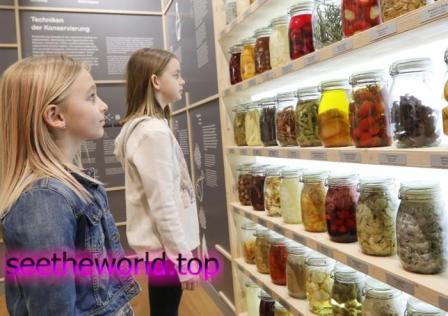
The next stop will be the exhibition “Byzantium and the West” , which will take you on a journey through the times of a forgotten 1000 years. The place of action will be Schallaburg Castle in the village of Schollach (Melk district), where two worlds that mutually trust each other and, nevertheless, are strangers, will be presented. The exhibition will introduce you to the Western Roman, Eastern Roman or Byzantine empires. You’ll see valuable objects, ingenious uses of the mind, and enjoy fantastic stories at the same time.


Warm days are coming, so be sure to visit the Garden Summer 2018 event in Tulln an der Donau . Until the end of September, you will have the opportunity to visit the international horticulture fair with the first ecological exhibition in Europe, called ” Garten Tulln “. The next important center will be the town hall / monastery of the Minorites with the exhibition “#TullnART – garden of artists” . You can enjoy shared bike rides, meadow walks, breakfasts with garden experiences, guided city tours (English, German) or gardening workshops.
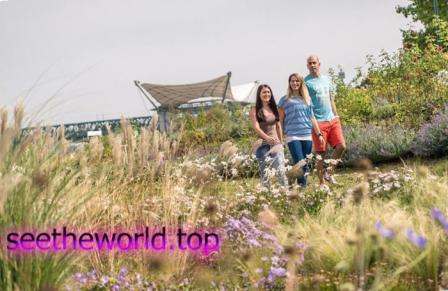
Don’t forget to visit the beautiful outdoor gallery La Gacilly – The World in Pictures in Baden near Vienna . A huge gallery of 35 illustrated stories on the theme “Man and his living environment” will transform Baden in the period from June 8 to September 30 into one large open gallery. From Josefsplatz through Main Square, Baden’s old town to Brusattiplatz, through Schlossergasse to Doblhoffpark, through the conservatory and rose garden, the “Festival La Gacilly Baden Photo” will take place with free access to the most beautiful outdoor gallery in Europe. At the same time, the public space will turn into a scene representing a work of art.
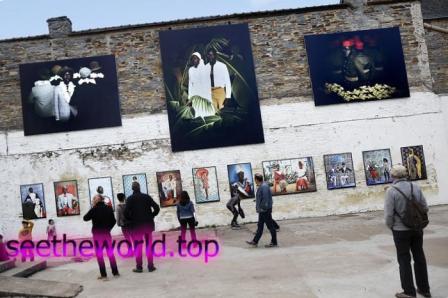
Finally, we invite you to the Grafenegg festival with a wonderful open-air stage, which will take place from June 21 to September 9 in the town of the same name. The festival promises to be one of the culminations of the musical and cultural summer in Lower Austria. Listen to Viennese waltzes, music from Hollywood, magical sounds of the Baroque or Bach played by a brass band. The Tonkünstler-Orchester and other first-class ensembles with excellent soloists will present an exciting program full of international classics. Spend your summer Saturdays in the unique environment of the castle park and enjoy music in the middle of nature.
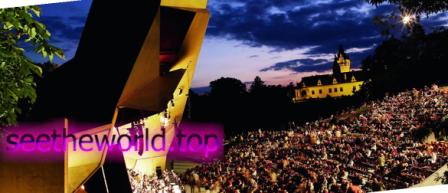
Lower Austria: Summer holidays, fun excursions and exceptional experiences in the mountains
If you don’t know where to go in the summer, the mountains are a great alternative to a vacation at the sea. The mountain wind will refresh you, and you can sunbathe on the forest lawns and terraces. No crowded pools, traffic jams or roaring air conditioners. Only beautiful mountains, crystal clear lakes and cozy campsites. So don’t think twice and go with us on a one-day excursion, a weekend or a whole summer vacation to the mountains of Lower Austria .
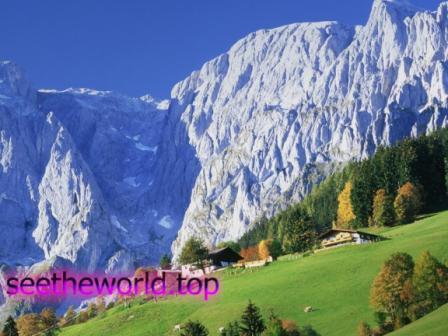
In the mountains you will find entertainment for the whole summer. The Viennese Alps and Mostfürtel regions offer peace, relaxation, relaxation and observation decks, space for active trips, hiking, cycling and especially excellent regional cuisine, culture and entertainment.
However, you need to plan your vacation well, especially if you are going to the mountains. Therefore, we offer you a choice for spending an unforgettable summer in the mountains of Lower Austria .
Each region and region is somehow exceptional. Mönichkirchen and Sankt Korona am Wechsel are close to Vienna and offer relaxation and adventure. Emerald waters, magnificent views and warm hospitality are typical of the Mostfürtel region, where you will feel right at home. In this region you will also find the highest peak of Lower Austria – Ötscher. It is known for its wild nature and deep ravines. Reichenau an der Rax and Payerbach are ideal starting points for scenic walks and good hikes.
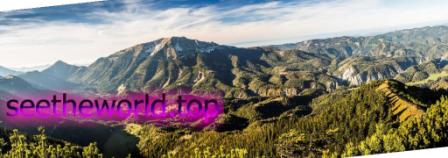
For those who would like to see the Milky Way and the “7,000 stars” in the sky, an excursion to the Ibstalerütte campsite (near Göstling) is ideal , which will surely provide you with such a view. Because the campsite is located in the wild nature of Dürrenstein, in the region with the lowest level of light pollution in all of Austria . You can spend the night here at an altitude of 1,343 meters above sea level.
We recommend going up to the campsite from Lunz am See , where on the way you will meet two waterfalls – the 60-meter Ludwigfall and the underground waterfall “Roaring Bull” (Brüllenden Steer) . Before crossing the Dürrenstein peak with a beautiful panoramic view from 1,878 m above sea level, you will walk along the mystical natural lake Obersee , from which very close to the camp Ibstalerütte, where you will find the best regional delicacies directly from the camp owner and where you can finish the hike .
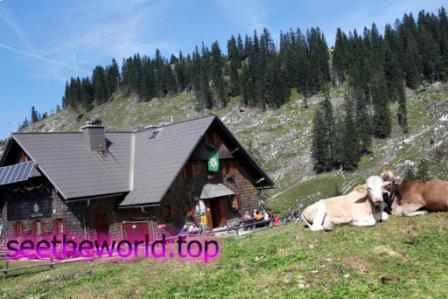
For those who do not like spending the night at high altitude, we offer an idyllic walk along three lakes ( Lunzer See – Mittersee – Obersee ). Along the way, you will again encounter the two waterfalls mentioned here, as well as curly, curling peat mosses and mosses that form carpets that will sway you as you walk. You can spend the night at the Ferienhaus Hinterbreiteneben holiday home in Lunca. This is an old forester’s house with a panoramic sauna, which is secluded – surrounded by a huge meadow full of flowers! Lake Lunzer See is an ideal place for swimming enthusiasts and those who like boating or prefer emerald water instead of tourism.
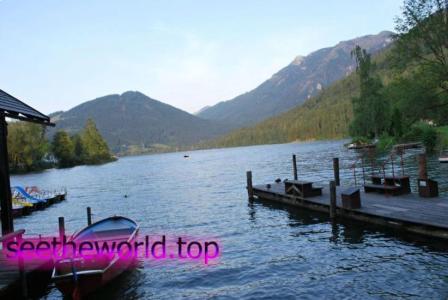
You must also make a trip to Hamming , because there you can visit the local stalactite cave ( Echer Tropfsteinhöle ), where beautiful rock formations await you. The cave can only be visited with a guide. Commented reviews are regularly held in German, but reviews in other languages can also be booked.
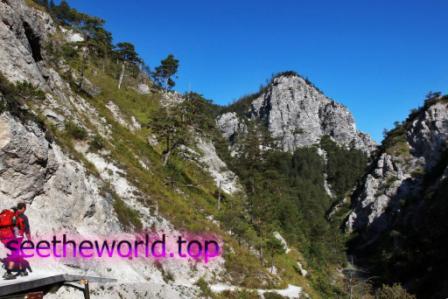
Lower Austria: The picturesque village of Mitterbach
Mitterbach is a village located in the picturesque regions of Lower Austria . In recent years, tourists from different countries are increasingly coming here. And not for nothing – there is a lot to see here.
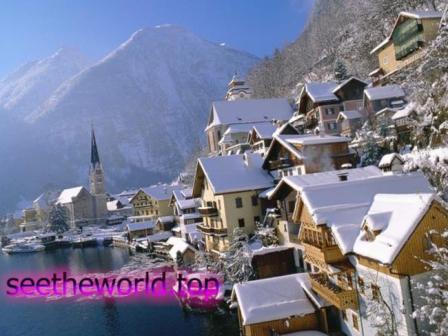
Even the most active will not be bored in the village. Tourism, bicycle tourism, skiing – everything can be tried here on the spot. And if you are in a lazy mood, the sauna is always at your service. When you come to these places, you will not be disappointed with the local cuisine. Of course, it is far from a diet, but a short walk in the fresh mountain air will burn all the extra calories without regret. You can stay in one of the hotels, boarding houses or in a traditional alpine “gasthofů” (guest house). In each of these establishments, you will be offered delicious food at a very reasonable price.
Spacing
Mitterbach is administratively located in the federal state of Lower Austria in one of its parts called Mostviertel, almost on the border with the federal state of Styria . The village is located just a few kilometers from Mariazell, one of the most famous pilgrimage cities in Europe .
Rest in the surroundings
The location of the village contributes to the development of agrotourism in the best possible way. Local manors, drowning in flowers in the summer, have been converted into family boarding houses. If you settle in one of them, you will have an unforgettable opportunity to get acquainted with the life of an ordinary Austrian peasant. In addition to traditional domestic animals, long-haired cows are bred here. If you like horses – here you will take your soul. Mitterbach is also known among lovers of paragliding, an adrenaline sport in which its participants fly on a paragliding wing (glider). They start by accelerating from the mountain or from the plain, in the latter case with the help of a tugboat. Right above the village of Mitterbach, the impressive Gemeindealpe mountain rises to a height of 1,626 m .

Fascinating panoramas open from the top, to which two cable cars take you in turn. From here you can go on hikes along the Vorderötscher massif , through the Ötschergraben to Erlaufklause or Wienerbruck, you can travel back by train (Mariazellbahn). On the way you will meet mountain houses and inns, where you can not only eat delicious food, but also spend the night. On the slopes of Hemeindealpe, several ski tracks are laid in winter. The name of the ski center connects the name of the mountain and the name of the village. From a height of 1,626 m to the lower station at a height of 800 m, excellently equipped tracks stretched. The snow lies here until the beginning of spring, so everyone has enough time to enjoy winter fun. In addition to natural snow, artificial snow is also used for tracks. A feature of the center is the longest family track in Lower Austria . It stretches 7 km from the peak to the valley.
Lake Erlaufsee (Erlaufsee)
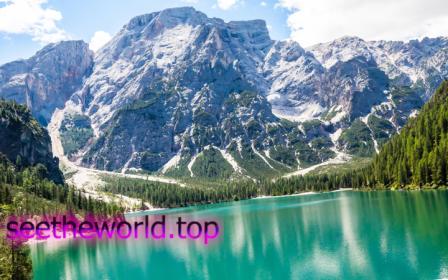
Not far from the village of Mitterbach, on the border between Styria and Lower Austria , just 4 km northwest of the pilgrimage town of Mariazell, at an altitude of 827 m above sea level, is the glacial lake Erlaufsee. Its length is 1.5 km, and the maximum width is 500 m. The depth reaches 38 m. Local residents and tourists like to visit the lake throughout the year. In the summer, it is nice to refresh in it, there are fish here, and underwater diving is also interesting. You can rent a boat or a catamaran. Playgrounds for adults and children are equipped on the shore. You can go around the entire lake by boat, viewing the picturesque shores from the surface. In winter, the lake freezes quickly because it is constantly in the shade when the sun is low. The frozen surface turns into a wonderful skating rink. Often in winter, you can also meet scuba divers who practice diving under the ice.
Lower Austria, Klosterneuburg – a majestic monastery in the arms of flowers
Spring is perfect for day trips, so we got in the car and drove this time to the cozy town of Klosterneuburg, which is about 15 kilometers northwest of Vienna. Already from afar we were greeted by a pompous building in the form of a monastery or billboards inviting to an exhibition of orchids in its garden.
Before going to the territory of the most significant religious building in Austria, which is already celebrating an incredible 900 years since its foundation, we will take a walk through the historical center of the city, which is located in the federal state of Lower Austria . Although the short walk through the streets did not last long, it was still picturesque. Beautiful houses, a square with sculptures of saints or prominent figures, a plague column, benches, historical fortress walls and small shops – all this created a pleasant atmosphere for us.

Overview of the monastery
Soon we found ourselves at the entrance to the territory of the monastery, which gave us a breathtaking view of the monastery church of the Virgin Mary , which forms a Romanesque three-nave basilica with two tall and magnificent towers. Next is the pompous imperial wing with a massive dome, connected to the Klosterneuburg monastery. First, we went around the entire complex from the outside. At the same time, we passed by herb gardens, squares decorated with flowers, even a fountain or a monument. We looked into the church, the decoration of which was really beautiful, the acoustics were perfect, and the organ of 1642 was unique and one of the most valuable in Austria.
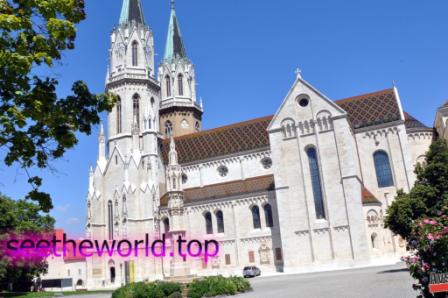
From the church, we moved to a part of the monastery, where an information and sales center was opened. In one part there was a rest area, part of which was also a cafe. The monastery complex offered thematic excursions – “Religious”, “Imperial”, “Wine Route” and “Treasury”. Since we didn’t want to wait for a group excursion, we chose the only individual one, namely the “Treasury”. Through the wonderful arched corridors, we got to the three rooms of the treasury, in which the most valuable treasures of Austria were hidden . The works of art of the greatest master jewelers or tailors were placed here, which were decorated with semi-precious stones, gold and precious stones. The crown of the Archduchy of Austria or the Holy Crown of Austria attracted our attention the most, which has been here since 1616, but was opened to the public only recently in 2012. We were accompanied by an audio guide at some exhibitions.
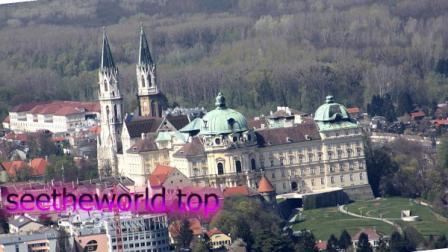
Since we chose an individual excursion, the door to the most valuable monument, that is, the Verdun altar, remained closed to us. We didn’t see the frescoes on the ceiling, the hall-terrane in the Baroque style, or the library. However, at least a little we looked into the wine cellars in the baroque style, located in the dungeon. The well-known local wine of high quality is still produced or stored here.
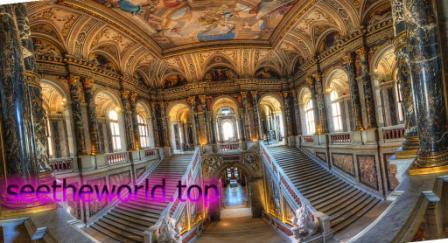
During our tour of the monastery, we met monks who are constantly here and breathe life into the monastery. While talking to one of them, we learned something about history. Klosterneuburg Monastery was founded in 1114 by Count Leopold III and has been home to the Augustinians, a religious order of the Catholic Church, from 1133 to the present. The monastery has a really rich history. From military invasions through construction modifications based on the orders of Emperor Charles VI and up to capture by French or German troops. An interesting fact for us was that the first wine-making school in Austria was founded here, that the writer Franz Kafka died in the Kiesling sanatorium near Klosterneuburg, or the famous Austrian car designer Hans Ledwinka was born here. Full of impressions and knowledge, we moved to the garden of the monastery.
In the arms of flowers
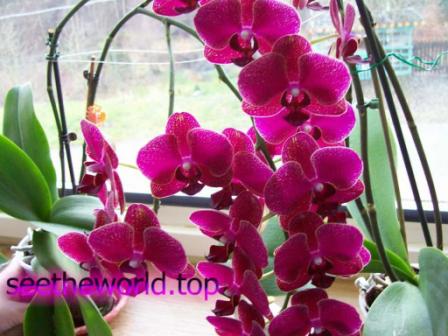
Every year in the garden of the monastery or in the greenhouse in the first half of March, a flower exhibition is held. One year is roses, the next is orchids. We were lucky and we were in the right place at the right time. We visited the orchid exhibition that was just taking place. We received one of the most aesthetic experiences in life. Just imagine an area of 1,800 m2, where thousands of flowers from all continents of the world will amaze you with their colors, shapes and aromas. You see rare and exotic types of flowers and pass creative exhibitions of flower masters. In addition, the exhibition is divided into a part where you can only admire the beauty of nature’s creations, and a commercial part, where you can’t resist and buy at least one small flower. You won’t even notice how your hands will be full of orchids or other seedlings. A fantastic advantage of such an exhibition for us was that we could share our experience or ask about the selection experiments of specialists, who were happy to answer and give us valuable advice. With inspiration, we very slowly left this garden of paradise, which was the end of our trip.
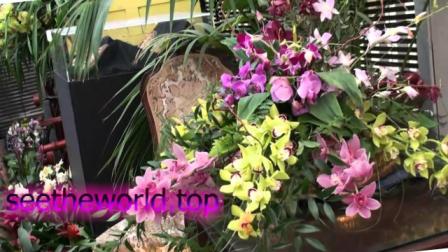
We had no choice but to go home. On the way, we agreed that in a year we will visit the rose exhibition and also look into other parts of this unusual city and the monastic complex of the same name.
Castles of Lower Austria
Rosenburg
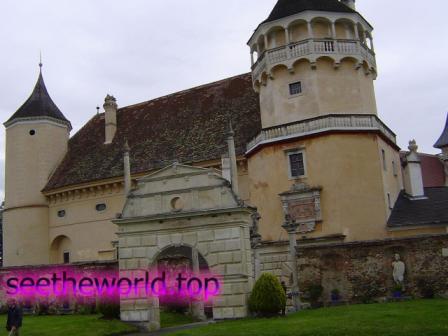
In some castles, as a bonus to the main excursion, you can also watch a show of birds of prey. The spectacle is very bright, colorful and interesting. Children will definitely be delighted. Of all the falconry shows we saw in Lower Austria, we liked the show at Rosenburg Castle the most. It is not very convenient to get here from Vienna, but, unlike the Kreuzenstein fortress, for example, where there is also a falcon show, in Rosenburg you can freely walk around the castle, take photos and view exhibits in the museum. And not galloping after the tour guide.
Falcons and hawks are put on a cap before hunting. This is done so that the bird does not get distracted, does not attack prey or other birds prematurely. The cap is removed directly in the field.
Unlike, say, hunting dogs, for which the hunter is primarily the owner, the relationship between a falconer and a bird can be called a partnership. There is never a 100% guarantee that the bird will return.
Rosenburg is one of the most visited sights in Austria, which is not surprising. There are so many interesting things here: from a wonderful costume show and Europe’s largest knight tournament ground to an exhibition of medieval weapons. And in the summer, concerts and festivals are held on the territory of the castle complex.
Antique furniture, tableware, a museum of falconry, the exhibition “Life of the nobility”, a library and a marble hall – all this can be seen in Rosenburg.
Since 1678, the castle has been owned by the Hoyos family, now its owner Markus Hoyos is actively engaged in restoration and the installation of new exhibitions.
Kreuzenstein
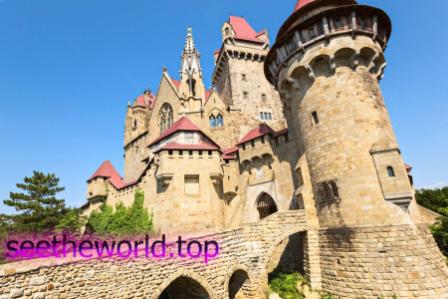
This is the former Roman fortress Castellum Per hum , which came under the ownership of the Habsburg family in 1278 and was captured by the Swedes in 1641 during the Thirty Years’ War.
After a brilliant victory at the Czech village of Jankiv, the way to Vienna was practically open for the Swedes, but the Swedish Marshal Lennart Thorstenson decided not to tempt fate: instead of attacking the Austrian capital, he retreated to Bohemia and then returned to Sweden. However, before leaving, he ordered to blow up the fortress, which was done.
So Kreuzenstein stood in ruins until the middle of the 19th century, until the Austrian landowner Count Johann (Hans) Nepomuk, Count Wilczek, exercised the right to purchase it as private property. A philanthropist, collector and lover of antiquities, he turned a dilapidated castle into a real museum of the Middle Ages.
By the way, the first private owner of the castle is also famous for sponsoring the Austro-Hungarian polar expedition, during which the Austrians discovered Franz Joseph’s Land . It was a surprise for us personally that the Austrians discovered something there, and even in the north!
The castle still belongs to the heirs of Johann (Hans) Wilczek, but you can visit it only with an excursion that lasts about an hour. Inside the castle is quite interesting: a huge collection of weapons, a knight’s hall, a medieval kitchen with the oldest preserved original kitchen table. It weighs about a ton and before becoming a table was part of an old wooden bridge over the Salzach River in Salzburg.
Ruins of Aggstein (Burgruine Aggstein)
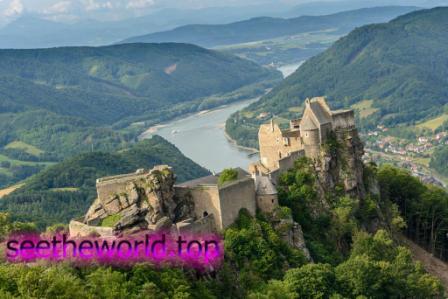
The ruins of the Aggstein Castle are perhaps the largest scenic attraction on the banks of the Danube. A favorite training place for climbers and those who simply want to admire the beautiful views.
The history of the castle is more than 900 years old. Since the beginning of the 12th century, it has repeatedly been subject to destruction, but each time it was rebuilt anew. From the end of the 12th century, the castle was owned by the Künringen family. The brothers Hadmar and Heinrich Künringen, popularly known as the Künringen dogs, engaged in robberies and robberies of merchant ships passing the castle on the Danube.
Numerous complaints from merchants forced the authorities to send an armed squad to Aggstein, but they could not take the brothers by force – the castle was too impregnable. However, soon the Künringens were tricked into being lured onto the ship – it can be said that the robber brothers were caught red-handed. They were not arrested, but simply took all their property, including the castle.
The next owner of the castle, the knight Georg Scheck von Wald, was also successful in robberies. But he robbed no longer as a robber, but under cover. A customs post was established in Aggstein, and Scheck von Wald collected taxes. And if the Künringen brothers were ordinary robbers who turned several surrounding towns into ruins, the shrewd George turned out to be an evil autocrat.
In addition to the fact that everyone who passes by ships was charged a huge toll (which, by the way, allowed Scheck von Waldo to buy several more nearby castles), a small door was made in the wall leading to the platform above the abyss. Pushing his captives there, Georg either demanded obedience from them, or sentenced them to stand on the platform for a long period of starvation. To avoid this, some simply jumped into the abyss, crashing against the rocks. Scheck von Wald called this site a “rose garden”.
Schloss Pöggstall
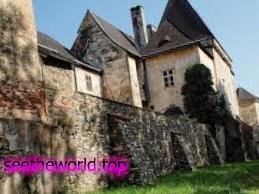 When you approach Peggstall Castle in the summer, you involuntarily begin to listen – it seems that the castle hums softly. Moreover, the sound does not come from the side, but from the castle itself, as if the walls are humming. During the promenade along the former fortress wall, the cause of the strange sound is revealed: the masonry has cracked in places, and a swarm of bees has settled in almost every crack.
When you approach Peggstall Castle in the summer, you involuntarily begin to listen – it seems that the castle hums softly. Moreover, the sound does not come from the side, but from the castle itself, as if the walls are humming. During the promenade along the former fortress wall, the cause of the strange sound is revealed: the masonry has cracked in places, and a swarm of bees has settled in almost every crack.
The place is absolutely authentic and pleasant for romantic walks. If you remove the cars and the local villagers dining on the terrace of the restaurant, you will have the complete impression that you are in some “very long ago” century. Complete loneliness, creaking stairs, falcons on the roof, the sound of the river and the buzzing of bees. All! After ten minutes, you already want to look out of the castle window and make sure that the people around you really haven’t disappeared.
In addition, in the nearby forest there are luxurious thickets of wild raspberries and a lot of mushrooms.
The first name of the settlement, on the site of which the current Peggstall is located, was Pehstal (from the word Pech – pitch). In German, the word Pech also means failure, bad luck. The castle itself was built at the end of the 13th century, then instead of a green lawn it was surrounded by a moat.
Hohenegg ruins (Burgruine Hohenegg)
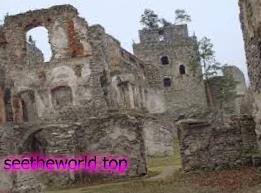 The ruins of Hoenegg will be of interest primarily to photographers. We know that many people like to shoot just such dilapidated ancient times; in addition, the mountain on which the castle stands offers quite beautiful views. Hoenegg is not far from Melk, and those traveling by car can turn here for half an hour.
The ruins of Hoenegg will be of interest primarily to photographers. We know that many people like to shoot just such dilapidated ancient times; in addition, the mountain on which the castle stands offers quite beautiful views. Hoenegg is not far from Melk, and those traveling by car can turn here for half an hour.
Entrance to the castle territory is free. True, in the summer, holidays are often held here, and then the gates are closed for several days. But the humane Austrians will always open them for those who want to see the castle, you just have to ask.
The first mention of Hoenegg in documents dates back to 1140. The castle often changed owners, but its heyday (however, as well as its decline) came at the time when Hoenegg was acquired by the Montecuccoli family. Raimondo Montecuccoli, Duke of Melfi, was an Austrian field marshal of Italian origin who participated in the Thirty Years’ War of 1618-1648. After becoming the owner of Hoenegg Castle, Montecuccoli began to actively organize it. Fortress fortifications and a seven-story tower with a belfry were added to the main building.
From 1631 to 1756, the castle was constantly renewed and completed, until its next owner, Count Zeno Montecuccoli, moved to Mitterrand. And Hoenegg became something like a hunting lodge, which the count visited several times a year.
Since 1970, the castle has been constantly undergoing minor restoration works.
Goldegg Castle
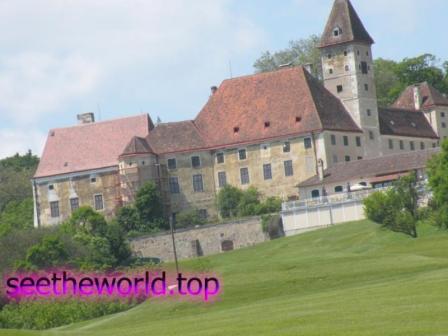
Goldegg Castle in Lower Austria is an ancient building , the first mention of which dates back to the year one thousand two hundred and ninety- three . It got its name in honor of the first owner – the famous Goldegg family . During its long history , the architectural structure has undergone many modernizations and additions . The three-span chapel of the Crucified Savior with rich stucco of the 17th century is
of particular interest to visitors to the Goldegg Castle , which houses the Christ on the Cross Altar of 1839 by Joseph Baldauf , the Crucifixion of Christ painting of 1747 by Martin Johann Schmidt . as well as the painting ” Saint Andrew “.
In addition , another decoration of the majestic castle is the green garden located on its northern side . The latter is a vivid example of the garden and park art of Lower Austria . On its territory there is a small pond with an island , a summer gazebo 1800 , made of wood and flexible tiles , as well as the Marian column of 1910 .
Lower Austria: Annaberg – opening of the ski season
Although winter has just begun, many ski centers open their ski slopes on these days. Even though they have only launched a part of the transport units, visitors eager to ski, they have enough in this busy time of Advent.
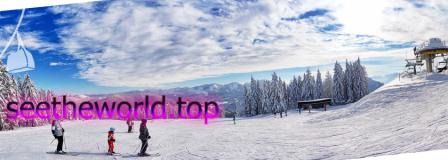
Ski resort Annaberg in Lower Austria
The picturesque village of Annaberg in Lower Austria , which is home to the ski resort of the same name, is no exception. Although the ski complex will not amaze you with its size (there are “only” 20 km of ski slopes), it will win the hearts of skiers with its family atmosphere and first-class services. Especially in recent years, the village of Annaberg has been visited by more and more winter sports enthusiasts. Perhaps this is due to the fact that it is located at an altitude of 800-1334 meters above sea level, and recently has better snow conditions at its disposal than more remote parts of Western Austria. Even the prices of ski tickets here are not very high.
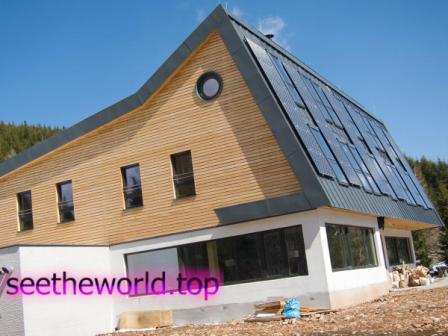
The Annaberg Ski Center opened the ski season this year symbolically on the holiday of St. Nicholas, which can be a good gift not only for children, but also for us adults, who cannot even imagine a winter without real skiing. Despite the fact that only half of the 3 cable cars and 6 ski lifts are still in operation, skiers will love it here. Not only now, but, in fact, until now it has not happened that we stood in line for the lift for longer than 2-3 minutes, and we were here more than once at different times of the winter season. Well-prepared ski slopes, a comfortable mountain camp with an interesting offer of food and drinks, or a buffet restaurant and numerous buffets are just some of the services you will find in the center. Ski school, rental office or free parking are self-evident.
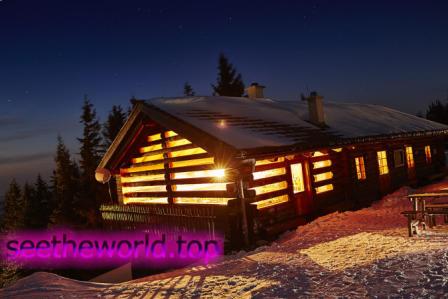
In the village you will find many options for accommodation and food. First of all, we liked the beautiful apartments, which are part of an inn and hotel not far from the church in the center of the village. They can not only cook their own food, but also use the common room, where there is a table for ping-pong, darts or a large room full of toys, which will be appreciated especially by mothers with children. The hotel also has a sauna, which is included in the price of accommodation, so after skiing there is nothing better than warming up and relaxing your frozen body.
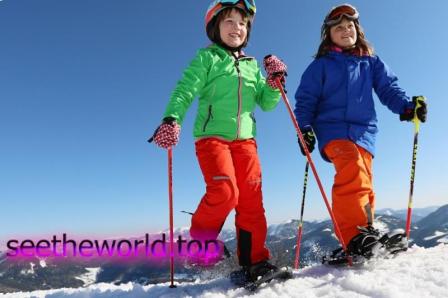
It can be said that the prices of accommodation and other services in this part of Austria are in most cases more than favorable, and, given the distance from the border, for our compatriots it is a very interesting skiing and also a tourist industry that is definitely needed sometime to visit
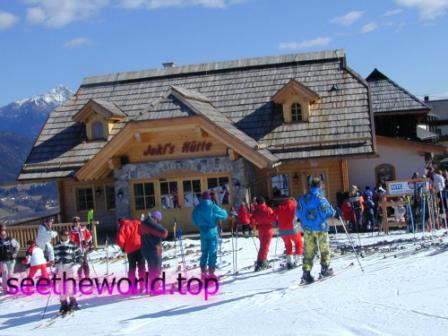
Other interesting places in the vicinity
There are other interesting places close to Annaberg. For example, the nearby town of Mariazell, which is one of the most significant places of pilgrimage in Central Europe, and at the same time a famous mountain climatic resort. There is also a popular ski center above Mariazell. Just 4 km northwest of the place of pilgrimage, near the village of Mitterbach, at an altitude of 827 meters above sea level, the Erlaufsee glacial lake is located, which provides many opportunities for spending free time all year round. In winter, the lake freezes very quickly because the sun is low and the lake is in the shadow of the surrounding peaks, so it is popular with outdoor ice skaters. Here you can also meet divers who practice diving under the ice. Right above the village of Mitterbach at a height of 1,626 meters above sea level rises the beautiful peak of Hemaindealpe, which offers a beautiful view of the surrounding area. Another ski center operates on its slopes in winter.
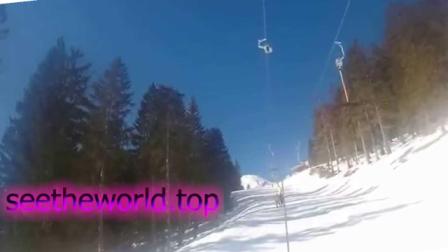
So? Still wondering where to go skiing this time? Why don’t you go to neighboring Austria for a few days and visit one of the smaller centers? They will certainly pleasantly surprise you not only with their first-class services, but also with favorable prices.
Lower Austria: Resort Semmering
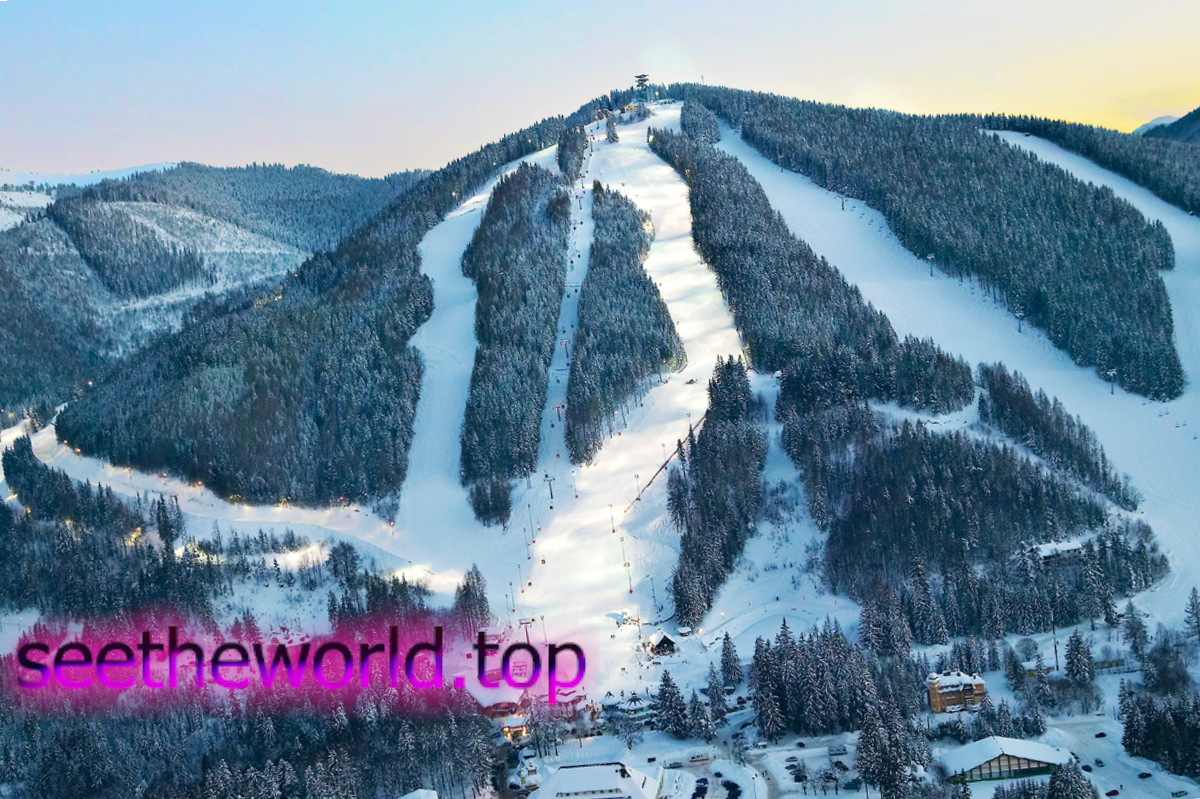
The tiny town of Semmering is one of the best ski resorts in Austria. It is located in Lower Austria only 90 km southwest of Vienna and is easily accessible to both residents and guests of the Austrian capital. The permanent population of Semmering barely exceeds 500 people, making it one of the smallest ski resorts in Europe.
- The place became known already at the end of the 19th century due to the fact that the Viennese aristocracy and Emperor Charles I himself (the last emperor of Austria-Hungary, 1916-1918) liked to rest here, among extremely picturesque wooded mountains
- Nowadays, the Semmering resort is used as a ski resort in winter and a place for mountain trekking in summer – given its location, it can be considered one of the attractions of Vienna.
- At the beginning of winter, the stage of the Women’s Alpine Skiing World Cup is held here every year

- The average height of the area is about 1 km, the maximum is over 1,700 m
- Two skiing tracks: Hirshenkogel (below) and Stulek (above). The total length of downhill ski tracks is about 40 km, for cross-country skis – about 30 km
- The season lasts from December to the end of March. One-day “skipas” for adults cost about €40, for children – half as cheap
Weather
In the period from December to March, the average air temperature in Semmering is about -2-5 ° C. The climate is wet, the peak of precipitation falls in July – up to 120 mm. According to statistics, January is the driest and sunniest month of the year. It is cold here in the summer: on average about + 20-22 ° C.
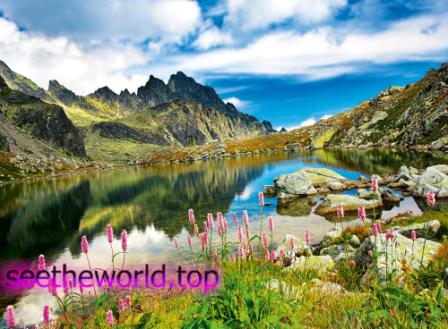
Attractions
The Semmering Railway, built in 1848-1854, with a length of 41 km, is a model of engineering art and is laid in an extremely picturesque area, among wooded hills and valleys. Included in the UNESCO World Heritage List
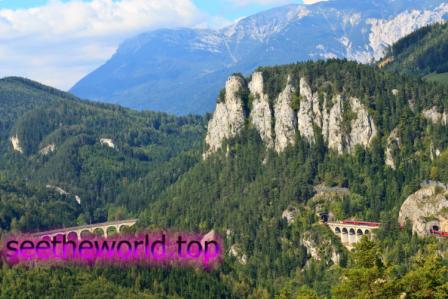
- Guests of the resort can also make an excursion to the city of Graz (95 km south of) with its famous Clock Tower , the Ioanneum Museum and Eggenberg Castle , the former residence of one of Austria’s most noble aristocrats
How to get to Semmering
Vienna Airport Schwechat is located 100 kilometers northeast of the resort and is connected to the latter by express buses and taxis. Vienna and Graz can be reached by regular train – the railway passing through Semmering connects these two largest cities in Austria .
Resorts of Lower Austria. Baden
Baden is one of the best balneological resorts in Austria and is located only 26 km from the capital Vienna . Its population is slightly more than 25,000 people, so the number of tourists here always exceeds the number of local residents. The city is located in the picturesque valley of the Vienna Forest and is surrounded on all sides by dense green vegetation. Baden has been well known in these places since the days of the Roman Empire . In that era, the Romans actively used hot sulfur springs, which function to this day. In different years, the lands of Lower Austriaburned and ravaged by the Hungarians and Turks, but the mineral springs of Baden continued to exist. Since the 18th century, this resort has become popular with the Austrian nobility. In particular, great attention was paid to it by Emperor Franz II , who preferred to spend his free time here, which he used for treatment and recovery from the heavy burden of state cares.

In addition to medical procedures and the rehabilitation process associated with staying in pools and massage rooms, Baden is interesting for its cultural and historical sites. For inquisitive tourists, there are many interesting places worth visiting. Fans of active pastimes and sports will not leave here disappointed, and the impeccably arranged tourist infrastructure allows numerous guests to feel absolutely comfortable both during their stay in the hotel and while moving around the city and its surroundings.
The central place of recreation in Baden is the Kurortny Park , which is easily identified by the sound of the orchestra playing from there. Its area is full of flower beds and green trees. There is a ceremonial hall for cultural and entertainment events, a monument to the great composers Strauss and Lanner, and an elegant gazebo under the symbolic name ” Beethoven Temple “.
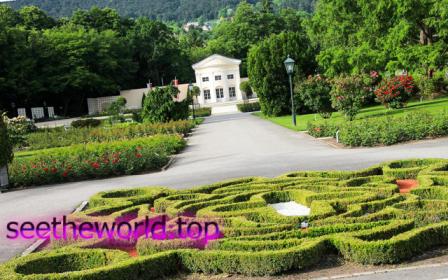
No less attractive is the Doblehofpark , with the castle Schloss Weikersdorf , rising on its territory. In summer, the flowers that grow around the perimeter of the park area give off an incomparable aroma that can be felt far beyond the borders of the Doblhofpark.

Baden is full of quiet lanes, low houses and classic villas in the Biedermeier artistic style . Along the streets there are restaurants and cafes, where visitors are greeted with the same hospitality and a wide range of dishes. Guests are also offered exquisite Austrian wines. In the summer season, mass events are held every day in almost all parks and squares, designed to entertain the public and bring a lively variety to the resort atmosphere of the city. Adrenaline lovers and sophisticated gambling connoisseurs are always pleased with the presence of the Baden casino , where you can play roulette from your heart, calling on luck to leave here with pockets full of new, crisp banknotes.
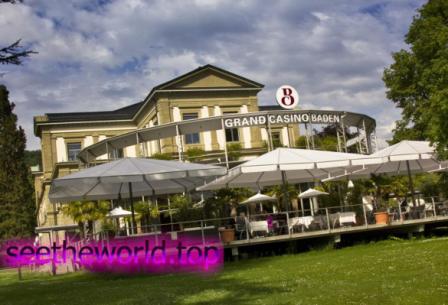
Many interesting sights are also located in the vicinity adjacent to the resort. Just a few kilometers from it are the ancient ruins of Raucheneck Castle , and nearby is the Chateau Weilburg Palace , built in 1825 by Archduke Charles of Austria , who became famous thanks to his victory in the Battle of Aspern . Directly opposite the palace, Rauchenstein Castle , built at the beginning of the 12th century, impresses with its scale and strict appearance .
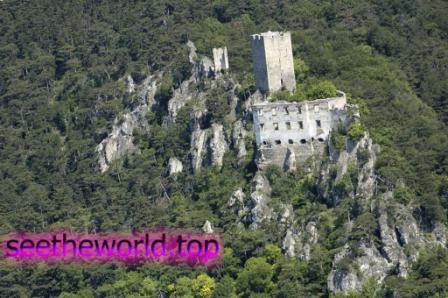
Approximately 6 km along the Helenental valley , the cozy hunting lodge Mayerling boasts a spooky story about the death of Crown Prince Rudolph of Austria and Baroness Maria von Vechora . Their dead bodies were found in 1889 in the inner rooms of the hunting estate, and the cause of death was never established. A little further, behind Mayerling, is the Heiligenkreuz Abbey , founded in the Middle Ages and perfectly preserved to this day. In its monastery complex there are tombs with several representatives of the Babenberg princely dynasty. Due to its close location to Vienna, Baden can be reached very easily and quickly to the capital of Austria, especially since the cities are connected by tram lines and railway lines.
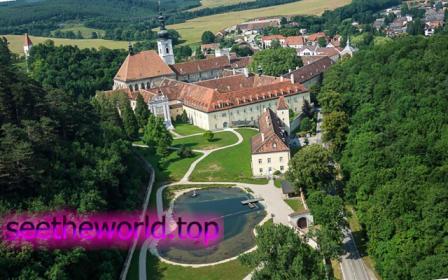
The main advantage of the resort is its natural sulfur springs, which, with the competent and skillful use of modern technologies, have turned into a large-scale health center that has gained popularity far beyond the borders of Austria. Today, the Baden health center has 15 baths at its disposal, 13 of which have warm water, where the temperature varies from +22 to +36 degrees. Its main ingredient is calcium sulfate. The springs themselves are located at the foot of the Kalvarienberg mountain , formed from dolomitized limestone.
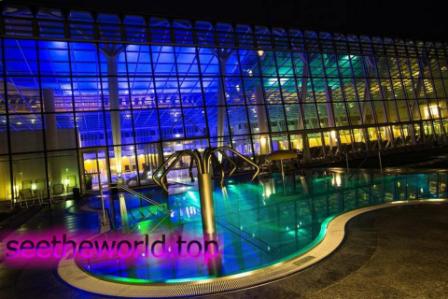
At one time, many famous people rested and were treated in Baden, including the outstanding composer Ludwig van Beethoven , who had several residences here. It is best to move around the city on foot, breathing in clean and fresh air. It is not only useful for health, but also educational, taking into account the historical past of these places. However, those who wish can always rent a bicycle, while there is simply no need to rent a car here.
The climatic conditions at the resort are very pleasant and attract a long stay. The average air temperature in the winter months from December to February is +3 degrees. In the hottest summer months, the thermometer stabilizes at +25, although it can be hotter. There are not many sunny days in the year, the lion’s share of them fall from May to August. Winter is usually gloomy and snowy.
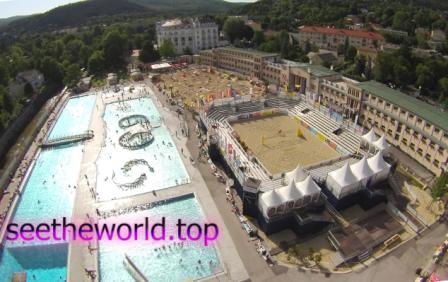
For many years, Baden has consistently been considered the most popular and visited balneological resort in Austria, which is confirmed by hundreds of thousands of guests from various regions of the country and the rest of Europe who visit it throughout the year.
